Ten Stunning Places to Watch The Northern Lights
The Northern Lights are a phenomenon that have aroused human superstition and curiosity for millennia. Now the stuff of Bucket List fantasies, they once beguiled and inspired our earliest ancestors…
Just imagine how it must’ve seemed to our primordial relatives. The stars held steadfast in the night’s sky. They inspired awe but their permanence was comparative to the sun or the streams or the mountains. Then on rarer occasions magic would takeover and the cold night would erupt with curtains of rippling light – it’s no wonder the lights were so intrinsically linked with spirituality and religion.
Early Cro-Magnon humans, huddled in the caves of Southern France, scrawled the gloomy walls with paintings of this natural event. In fact, the first supposed depiction of the Northern Lights dates back 30,000 years. There are also 2000-year-old Auroral references in the ancient cultures of eastern Asia – many of their earlier observations characterised the lights as heavenly entities, various different elements and animals. A dragon is commonly evoked in Chinese records, starting in 687BC.
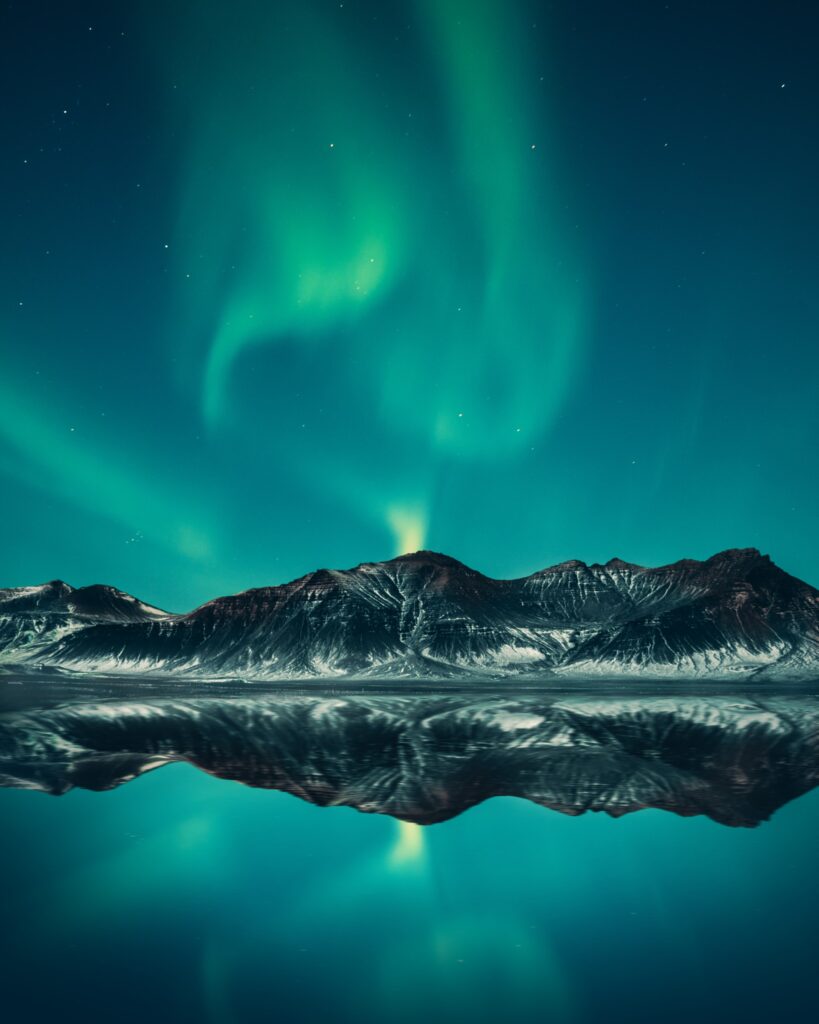
There were countless stories of Gods creating flaming clouds, rendering bright figures in the night sky, or of lights appearing as a divine intervention in battle, like during the Fall of Attila or the Siege of Byzantium. The Greek philosopher Xenophanes once wrote of an ‘accumulation of moving and burning clouds’ and Hippocrates provided early scientific insight, linking the natural fireworks to reflected sunlight.
Further speculation examined the merging of different elements. Aristotle described how the sun heated the ground and steam rose and was ignited by the element of fire, painting the atmosphere with a wash of incandescent colour. There were even five descriptions of these lights in the Old Testament and many other inclusions in writings and observations scattered throughout our history.
For the Norwegian Vikings, this phenomenon inspired ideas of a multi-coloured sky bridge that connected the Norse Gods to Earth, which they called the Bifrost. It was seen as the gateway to Asgard and personified by the shining deity, Heimdall. For the Sami people in the northern regions, the lights were imbued with supernatural strength.
They painted coloured symbols on their drums and called the lights Guovssahas, which translates roughly to sound light. It’s thought that they were the first to link the lights with sound, describing ancestral voices and a fierce cracking that would emanate from the most powerful auroras. Consequently, they regarded these displays as being almost Godlike in proportions and this aspect of sound has not yet been dismissed on scientific grounds – it’s possible the strong electrical field creates noises that can be heard by humans.
The Northern Lights – A Scientific Explanation
Throughout the years there have been countless poetic interpretations of the lights as souls taking flight up to breach the ether. Once, after Thomas Becket died in 1177, the lights were described as the blood of martyrs flowing over the roof of our world. It wasn’t until the 17th century that French mathematician, Pierre Gassendi, finally came up with the scientific name: Aurora Borealis, which was also used by Galileo Galilei.
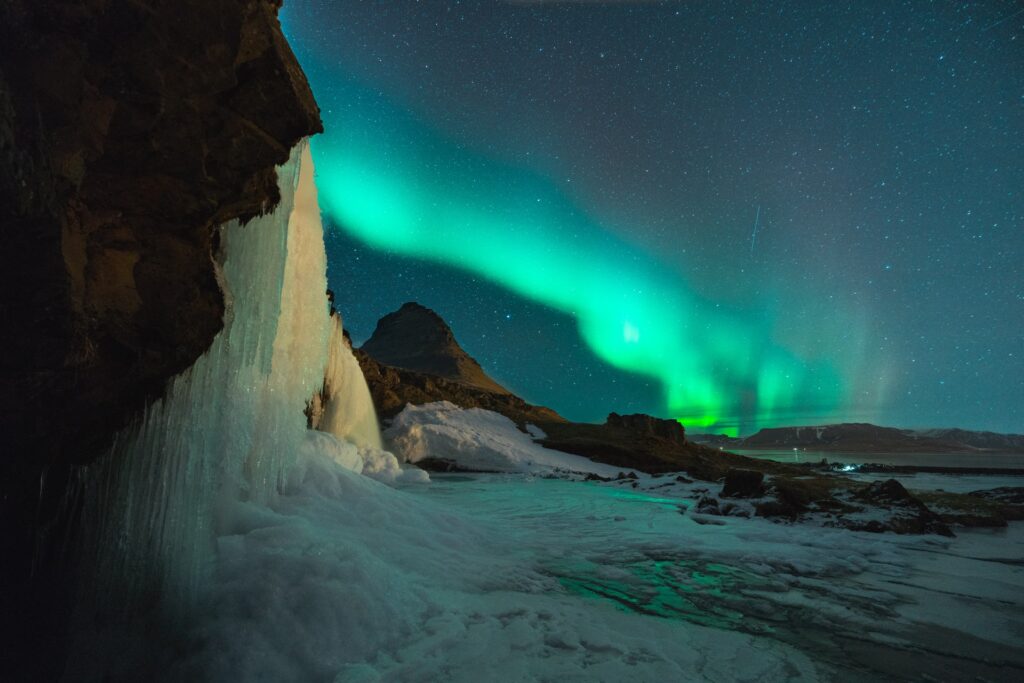
Then there was a quiet period with very few observations. Around 100 years passed in silence during the strange weather patterns of the Maunder minimum. This ended in dramatic fashion with a massive Auroral light show on March 17th, 1716. One of those who lived through this event was Sir Edmund Halley, whose findings are still considered valid today. Halley recognised that the rays were caused when particles interacted with Earth’s magnetic field. He also noted how the rays swan parallel to our magnetic field and that their vault shape was a ‘perspective phenomena’.
In the middle of the 19th century, Swedish physicist Anders Jonas Ångström expanded on this and added in observations of a light and gas interaction. More systematic research developed in the decades that followed, namely between 1882-83, when an international effort established far-out research sites in the polar region.
Over long periods of study they were able to gather accurate readings of the Northern Lights, led by Danish astrophysicist, Sophus Tromholt, Swedish physicist Vilhelm Carlheim-Gyllensköld and Finnish explorer, Adolf Nordenskiöld, who made his contributions from northern Siberia, while his ship was entrenched in pack ice, in the winter of 1878-79. These separate discoveries served to consolidate knowledge that the Aurora formed a ring of ever-changing light, like a halo over the polar region.
Finally, by the end of the 1950s, a more comprehensive understanding of the aurora was being circulated. Astrophysicists, scientists and mathematicians, like Kristian Birkeland and Carl Störmer, observed that a system of electric currents travelled close to the Earth’s surface – now known as the Birkeland currents – and ran horizontal over the aurora region. This system then interacted with vertical currents, following Earth’s magnetic field lines. These currents were then identified (and the scientists’ findings validated) by satellites in the 1970s.
So, it is now known that the Northern Lights travel 93 million miles from the Sun, whipped into fleeting shapes and immense variations by solar winds. This stream of charged particles (mostly made up of electrons) travels the lines of Earth’s magnetic field, forming a shimmering halo that spans a staggering 1,500 miles, around the magnetic poles. In the upper atmosphere (at an altitude of roughly 60-200 miles), these solar particles collide with oxygen and nitrogen molecules, glowing in green and purple bands that snake and ripple across the night’s sky.
It’s an ancient wonder, augmented by science, that defies belief. Suffice it to say, we thought the chance of seeing this wonder up close was worth a little article.
Here’s our 10 Best Places To Watch The Northern Lights:
10. Reykjavik, Iceland
If you’re looking for memorable ways to see the Northern Lights, you need look no further than Iceland’s capital of Reykjavik. Sometimes the phenomenon is forgotten amongst a selection of local ice cave explorations, volcano treks and geothermal pools. You don’t necessarily need the isolation to get the full experience.
Travel to the west, still inside the Reykjavik area, and you’ll find a narrow peninsula and the little sprawl of Seltjarnarnes, a residential town alongside a nature reserve, edged by the North Atlantic Ocean. It’s a great, serene place to see the unravelling lights, with an onlooking lighthouse for company.
9. Tromsø, Norway
The milder coastal climes of Tromsø often tempt tourists eager for a winter glimpse of the Aurora Borealis. Sometimes locals talk of dark mornings on the road to work, when the sky is awash with unique colourations. For tourists, there are several viewing safaris available – guided aurora camping gives guests a chance sit around a lavvu stocked with wood, peering upwards at the light show, before retiring to sleep in warm Arctic-grade bags.
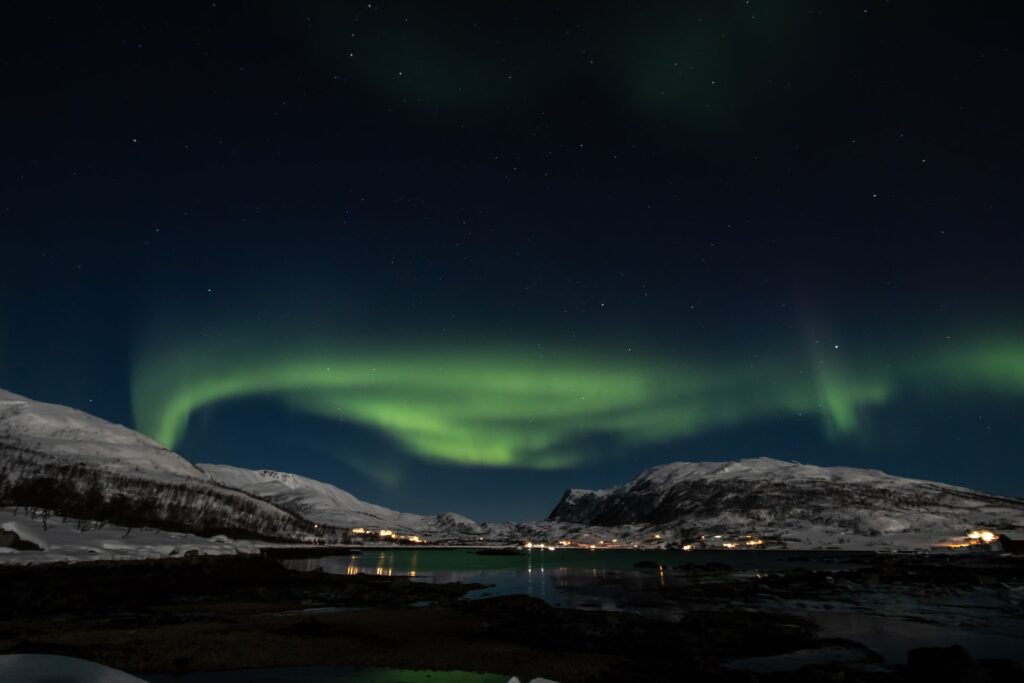
Remember Tromsø is one of the country’s largest cities and a cultural centre reachable via cruises from Hurtigruten or connected flights from Oslo, Bergen and capitals around the world, including Copenhagen and Helsinki. In summer, whales are often sighted along the Vesterålen coast and whale safaris and dog or reindeer sledding are also very popular.
8. Watching the Northern Lights in Ruka, Finland
One of the best places in Finland to catch the aurora is in the Ruka area, from mid-August to mid-April. Juhannuskallio has an otherworldly atmosphere – a seemingly isolated small town on the crest of Ounasvaara Hill. They host their share of midsummer parties and there’s a disused anti-aircraft base to explore. Not to mention the fact the winter months offer endless opportunities to hunt for the Aurora.
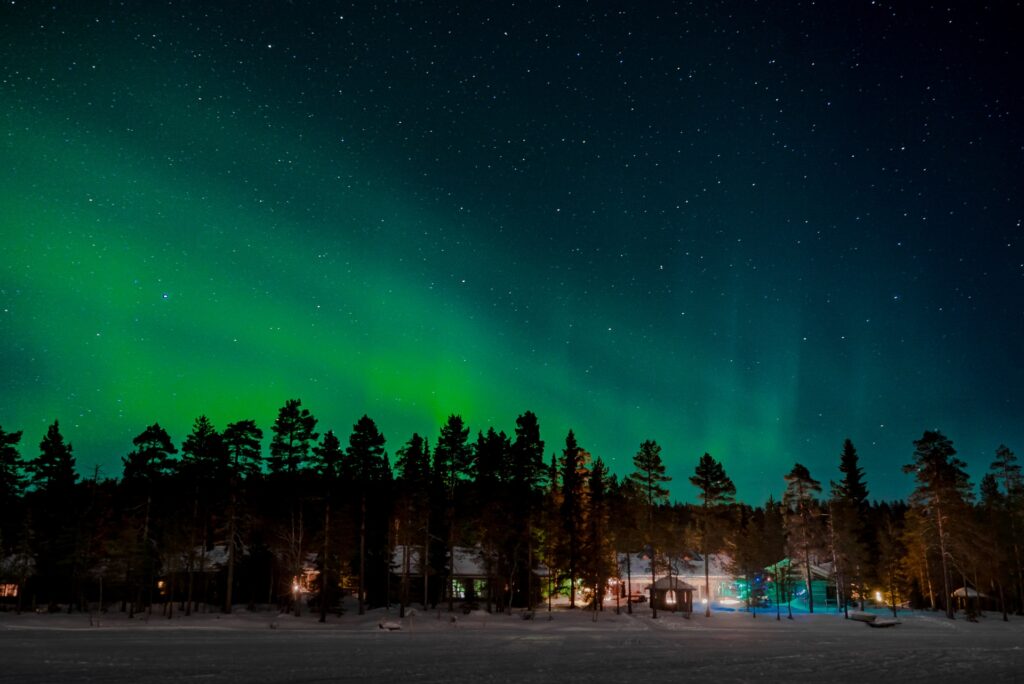
Tourists travel from afar to the snow-blanketed reaches of Riisitunturi National Park, usually opting for single or multiple night tour options, travelling by sled, Nordic ski, snow shoe or tour bus… there’s even the option to take a forest tour with a Nordic shaman, spending the night out with the starlight blinking overhead.
7. Abisko, Sweden
Popular due to their being less tourists, the small village of Abisko is found 95km from the far-northern town of Kiruna. It’s accessible by train, taxi or car, with plenty of hotel and hostel choices. Activities like ice climbing, cave trekking and moose-watching abound and draw in the numbers – chief among them, though, are the Aurora safaris, immersed in the wild nature roundabouts. It’s here they report the world’s most consistent sightings with myriad clear nights, owing to the region’s unique Micro Climate.
6. Rovaniemi, Finland
Rovaniemi is famous for many reasons – aside from being the capital of Finnish Lapland and the official home of that beloved chimney surfer (Santa Claus), it’s also home to some of the world’s most highly regarded Aurora Borealis safaris. The astral show unfolds here roughly 150 nights of the year, until early April. There’s a Glass Igloo hotel and plenty of accommodation options, ranging from rustic cottages to modernised glass cabins. Flights run from London, Helsinki and a few other Finnish cities. There are trains available from Helsinki too, but the trip takes up to 9 hours, so bring a good book.
5. Kiruna, Sweden
Cold, crisp and with endless starry nights – Kiruna sits inside the Auroral zones and offers a northernly light show that’s totally unique. Once Sweden’s coal capital, tourism is now the leading industry and the city is packed with plenty of overnight options and multiple day excursions, like starry night safaris to rival anywhere else in the world.
Trains and direct flights run to Kiruna from Stockholm – it’s really out there though, so be prepared for less of the comfortable amenities and an abundance of traditional activities, from cross-country skiing to snowmobiling. There’s also the added bonus of being able to stay at the stunning Kiruna Ice Hotel.
4. Threngsli, Iceland
A lesser-known spot for Aurora tourists on Iceland’s south coast, close to the fishing village of Thorlakshofn. Threngsli is nevertheless familiar to locals and travelling night photographers. The best viewing spots are quieter sites off the beaten track. You can hire a car or van and take a short drive to view those special skyborne lights in a more spontaneous way. Just follow the roads and pull over as you wish and look out over the far-reaching, flattened vistas. Follow the link below for van rental options.
3. Ivalo, Finland
The idyllic Finnish village of Ivalo serves as a gateway to Southern Lapland. If you’re staying here overnight you have multiple options, from wooden cottages to glass cabins – a chance to enjoy the lights with a few home comforts.
There’s the usual array of traditional activities, from snowshoeing to dog or reindeer sledding, as well as a point of exploration called Wild Spirit Park, with an abundance of wildlife, including arctic foxes. There’s only about 10 restaurants (which is plenty!) and Ivalo does offer an abundance of tranquillity – that seldom-considered quality that makes long, uncomfortable journeys worth it. You can fly in from Helsinki or Rovaniemi.
2. Thingvellir, Iceland
Another favourite among international photographers, this large national park is scattered with ideal spots to sit and take in the Icelandic scenery. A short 10 minute or so drive on from the tourist centre there’s a road that steepens as it winds uphill and delivers you to a lay-by where can pull up and step out and stare over the local national park in its entirety. If you’re lucky, you’ll also be privy to dark skies and that rare collision of energy in the thermosphere – just keep an eye on the Aurora forecast.
1. Vik Beach, Iceland
Finally – while every opportunity to see this phenomenon is unique – here’s one that’s truly special… The black beach of Vik is found near the town of Vík í Myrdal on Iceland’s southern coast. Keep in mind it’s very quiet. In fact, the town has only about 300 residents, which is considered pretty crowded for the region. The beach itself sits cradled by the cold ocean with basalt rock stacks like sentinels bracing against exploding waves. It’s raw and alive, with secret caves and enough folkloric tales to fill a year of campfire nights – great stories about petrified trolls and a cave-dwelling monster killed during the landslides.
It’s incredibly beautiful, but it’s also the wettest place in Iceland, so bring your best waterproof. You’ll see why you made the journey at night, when the sky comes alive with shivering luminescence and the local church stands nicely in frame to fulfil the dreams of tantalised photographers.
Got itchy feet? Why not start learning about the best places in Scandinavia to go kayaking or cycling or read about five of the most unimaginable stories of human optimism, courage and perseverance ever told. If you love to test your endurance across the most beautiful landscapes on the planet then check out these ice marathons.

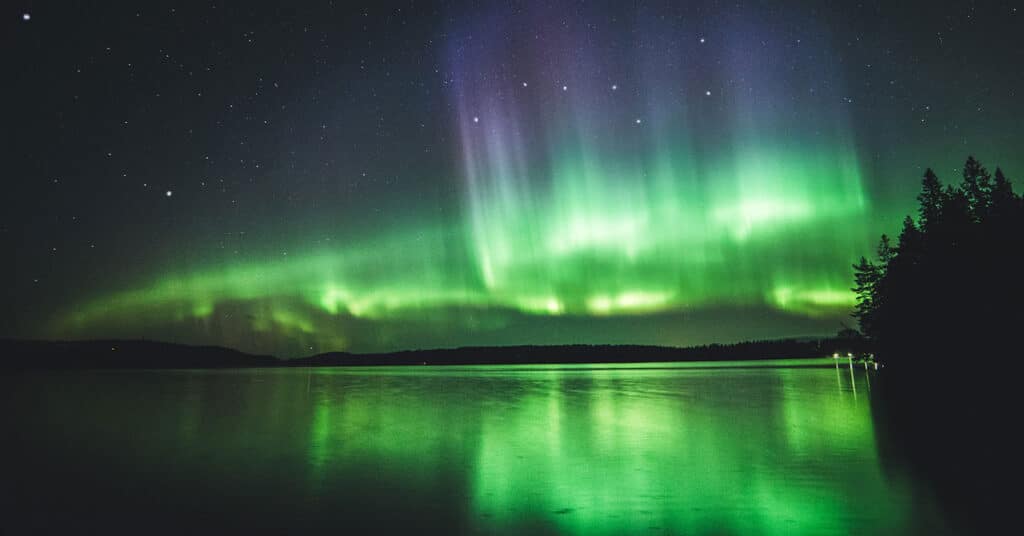
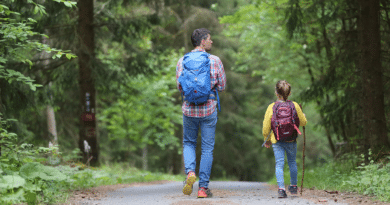
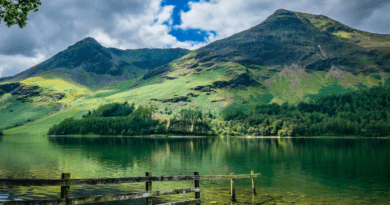
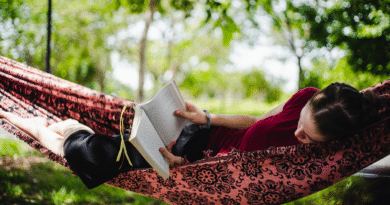
Comments are closed.